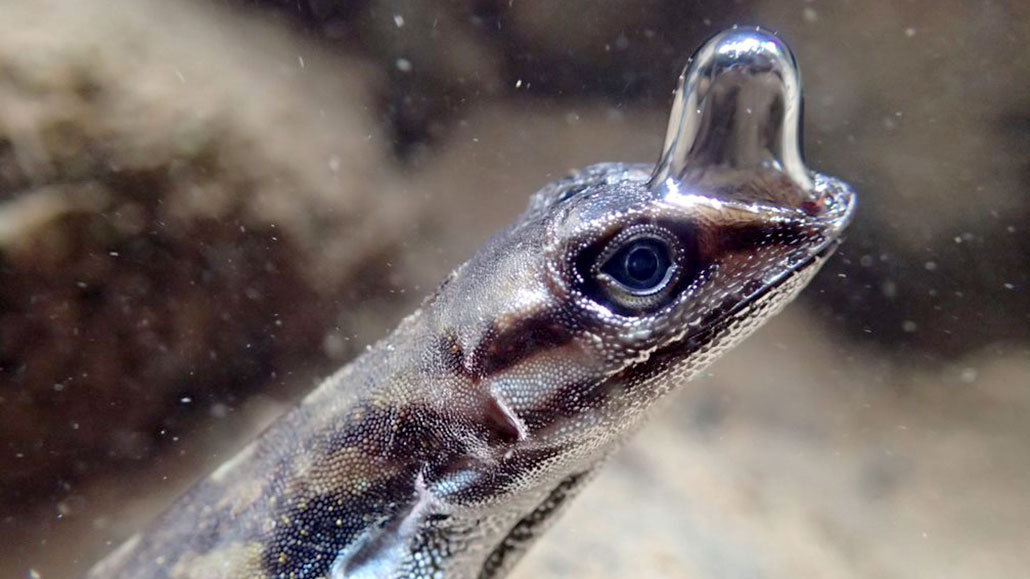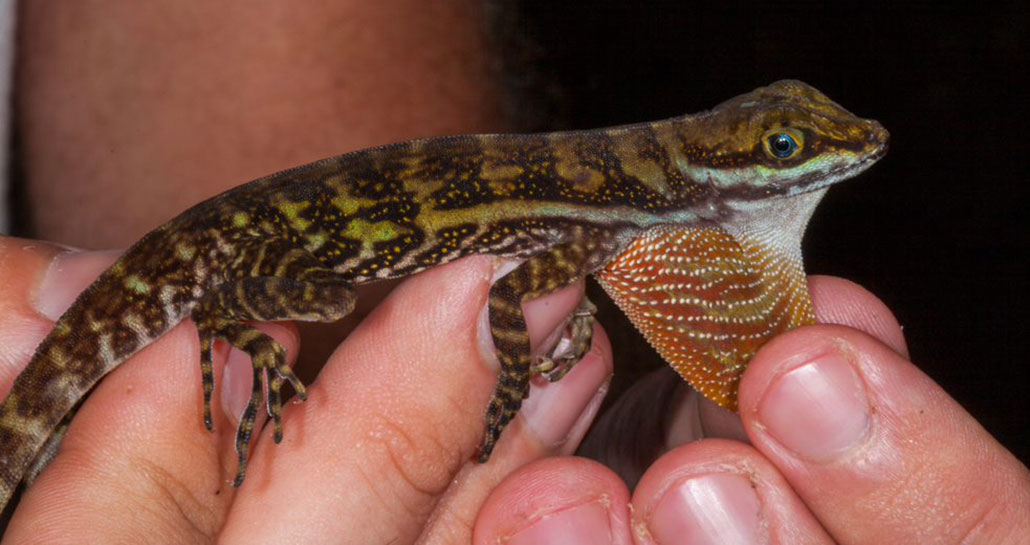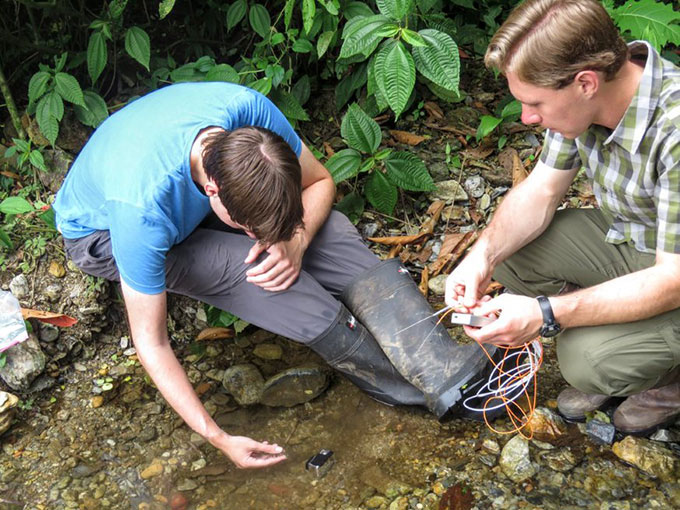A bubble of air lets some lizards breathe underwater
One Anolis lizard stayed submerged for 18 minutes

The bubble of air around its snout lets this lizard in Costa Rica breathe underwater. One champion lizard was able to stay underwater for 18 minutes!
Lindsey Swierk
Some small lizards have a newfound superpower. They can rebreathe exhaled air underwater. They do it by trapping the air in a bubble on their snouts, a new study shows.
“As anyone who has encountered one of these lizards can tell you, they dive underwater when they feel threatened. They can stay down for a while too — up to 18 minutes by my count,” says Chris Boccia. But how they stayed underwater for so long was a mystery. Until now.
Boccia is a PhD student at Canada’s Queens University in Kingston, Ontario. But five years ago, he was a master’s student in evolutionary biology at the University of Toronto in Canada. Back then, his professor, Luke Mahler, told him a story.
Mahler had been studying an endangered species of Anolis lizard on the Caribbean nation of Haiti in 2009. After releasing a lizard back into a clear, shallow stream, he noticed something odd. The lizard exhaled an air bubble around its snout as the animal clung to the rocky bottom. Then it appeared to repeatedly suck the air in and out of that bubble.
Mahler had to move on to his next research site so he couldn’t explore more. But years later, he still remembered the bubble-headed lizard. Boccia decided to investigate its behavior.
In the wild
In search of bubble-breathing lizards, Boccia traveled to Costa Rica in 2017. He and his team went out at night to capture the lizards. “Doing this when they’re sleeping makes things less stressful for them,” he explains. It’s also “easier for us to catch them,” he adds. Wearing headlamps to find the lizards in the dark, the team collected 120 lizards near streams and 180 away from streams. The included a range of related species.
The creatures grow to about 11 centimeters (4.5 inches) not counting their tails. Boccia’s group brought the lizards back to their camp, where they set up containers of river water. Then they dunked each lizard underwater. They held each loosely so the critter could surface when it wanted to.

While underwater, all of these lizards carried a bubble of air around their snouts. They appeared to breathe the bubble in and out. Some land-based lizards inhaled the bubble a few times but did not rebreathe a lot. Their river-based relatives re-breathed more often and stayed submerged longer. “One lizard was underwater for 18 minutes,” Boccia recalls. “We were starting to get worried about him.”
The lizards’ water-repelling skin may play a role. As the reptile dives into the water, a thin layer of air may get trapped against that skin. When the lizard now exhales, Boccia thinks that this air exits through the nostrils and expands the trapped air layer. In that way, the lizard might use it lungs to control the bubble’s size.
But if a lizard re-breathed the air in those bubbles, their oxygen levels should drop lower and lower. To test this, Boccia brought a small oxygen sensor and inserted the thin wire-like device into the bubble around the submerged lizards’ snouts.
“It took a lot of practice to do it without bothering them,” he says. But that work confirmed his hunch. The bubbles’ oxygen level slowly dropped as the lizards breathed.

Boccia also noticed that diving lizards closed their eyes, as if sleeping. He now suspects the lizards are slowing down the chemical activities that support cells and organs. That should reduce their need for oxygen so that they could stay down longer.
The new study highlights how different animals have evolved to live in water, says Jonathan Losos. He’s an evolutionary biologist at Washington University in St. Louis, Mo. Losos studies how lizards adapt to their environments. “Species that experience the same challenge in nature often find different ways to overcome it,” he notes.
“Fish use gills to extract oxygen from the water,” Losos points out. “Whales are able to hold their breath for a long time. And now we know that these lizards take oxygen underwater with them.”
Why do they do it?
Boccia has a few ideas that might explain why lizards breathe with bubbles, instead of holding their breath.
The bubble may help them shed carbon dioxide, or CO2. Animals — including us — don’t breathe just to take in oxygen. They also need to exhale CO2. If CO2 built up in their bodies, it could poison them.
CO2 exhaled into the bubbles may escape into the water, Boccia thinks. A bubble may also help the lizards pick up extra oxygen from the water. Oxygen can move between water and air. As oxygen levels drop in the bubble, dissolved oxygen in the stream may enter it to re-balance the levels. This equalizing movement is called diffusion.
Both Boccia and Mahler hope to continue studying this behavior.
“There are so many different types of lizards, there is a good chance that others do it too. We just haven’t seen it,” says Boccia. He published his findings May 12 in the journal Current Biology.







